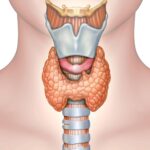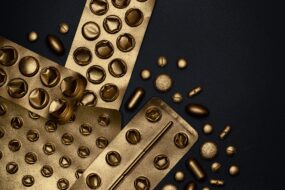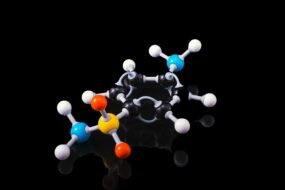- Home
- DRUGS
- Drugs acting on infectious Agents
- Amphotericin B (AMB.)
Amphotericin B is obtained from Streptomyces nodosus.
It is a polyene antifungal with a macrocyclic ring; one side has several conjugated double bonds and is highly lipophilic, while the other is hydrophilic with many OH groups.
A polar aminosugar and a carboxylic acid group are present at one end in some. They are all insoluble in water and are unstable.
Mechanism of action.
- Binds to ergosterol in the fungi cell membrane, causing damage and leakage of cell contents.
- It has a higher affinity for ergosterol in fungi cell membranes than cholesterol in humans.
Indication.
Active against a wide range of yeasts and fungi, including ;
- Candida albicansHistoplasma capsulatum
- Cryptococcus neoformans,
- Blastomyces dermatitidis,
- Coccidioides immitis,
- Torulopsis, Rhodotorula, Aspergillus, Sporothrix.
Clinical uses
- Applied topically for oral, vaginal and cutaneous candidiasis and otomycosis.
- Systemic mycoses and is the gold standard of antifungal therapy.
- However, it’s highly toxic.
- Effective drug for resistant cases of kala-azar and mucocutaneous leishmaniasis.
Adverse effects
- The acute reaction occurs with each infusion and includes chills, fever, aches, nausea, vomiting and dyspnoea lasting 2–5 hours.
- Nephrotoxicity is dose-related.
- Azotemia, reduced glomerular filtration rate, acidosis, hypokalaemia and inability to concentrate urine.
- Slow progressing anemia due to bone marrow depression.
- CNS toxicity: occurs only on intrathecal injection involving; headache, vomiting and nerve palsies.
Drug interaction.
- Aminoglycosides, vancomycin, cyclosporine and other nephrotoxic drugs enhance the renal impairment caused by amphotericin B.
Dosage.
- Orally (50–100 mg QID) for intestinal moniliasis;
- Topically for vaginitis, and otomycosis.
- FUNGIZONE OTIC 3% ear drops.












